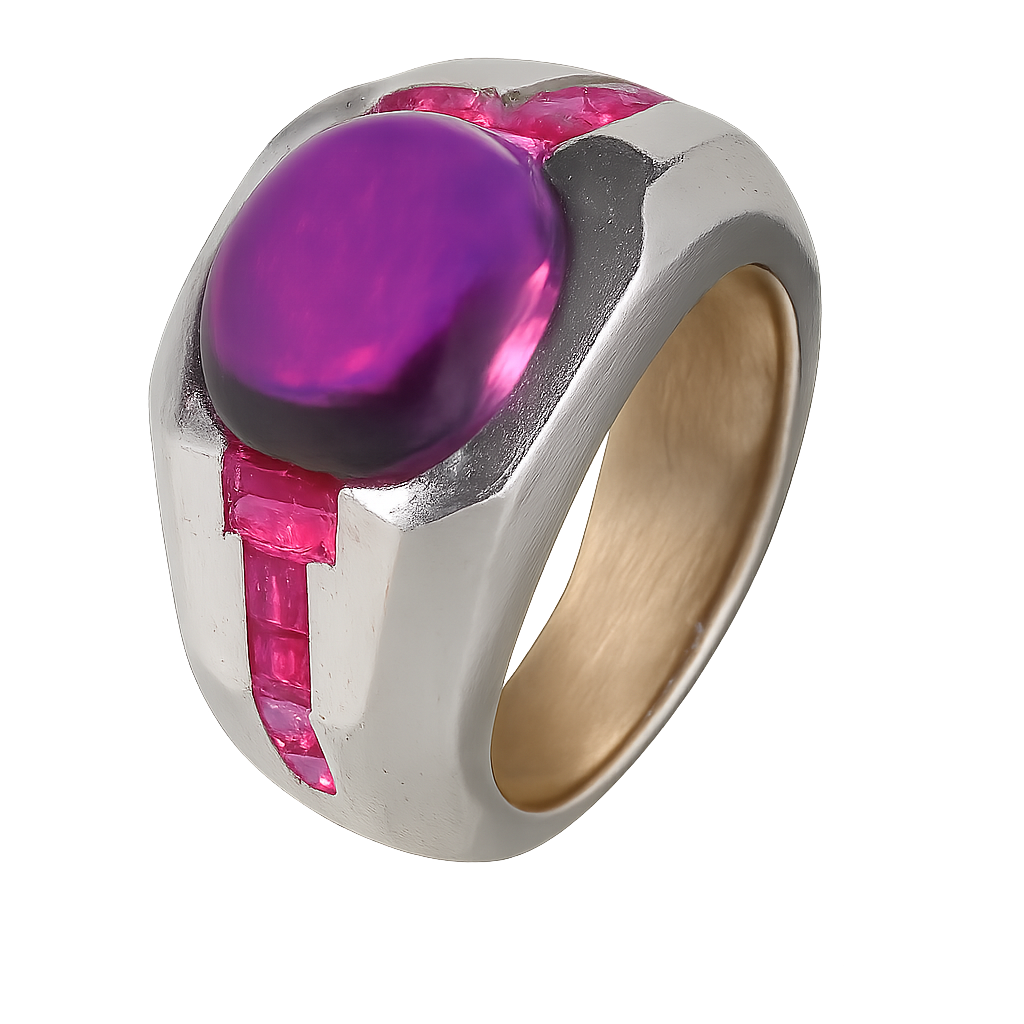Suzanne Belperron’s Apprenticeship at René Boivin: The Origins of a Unique Style
The story of Suzanne Belperron, a major figure in 20th-century French jewelry, cannot be understood without looking back at her formative years with René Boivin. This apprenticeship was not only a crucial stage in her career but also the true laboratory where her audacious, original, and deeply personal style took shape.
The beginnings of a promising young creator
After studying at the École des Beaux-Arts in Besançon, where she quickly distinguished herself for her drawing skills and sensitivity to volumes, Suzanne Vuillermeher birth name moved to Paris. Not yet 20 years old, she joined the prestigious René Boivin jewelry house in 1919, a maison already renowned for its creativity and distinctive approach to jewelry.
It was there that she truly honed her skills, surrounded by master craftsmen and talented designers.
The decisive influence of Jeanne Boivin
Although René Boivin, founder of the maison, had passed away in 1917, his widow Jeanne Boivin took over the direction of the workshop. A strong, passionate, and visionary woman, she was one of the few female leaders in a world dominated by men.
Jeanne quickly recognized Suzanne’s extraordinary talent and entrusted her with significant responsibilities, including designing pieces for a demanding clientele of aristocrats, artists, and collectors. Under her guidance, Belperron learned not only the technical mastery of high jewelry but also the freedom to invent new forms, far from the traditional conventions.
This was the crucible in which Belperron’s future signature style was born: powerful, organic jewelry where the stone often dictated the form, and where gold, platinum, or palladium were shaped with sculptural boldness.
Aesthetic rupture with classical norms
Within the Boivin workshop, Suzanne learned to go against the grain of dominant trends. While traditional jewelry emphasized symmetry and ostentatious brilliance, she explored new directions:
Architectured volumes where geometry harmonized with fluid lines.
Unconventional materials such as quartz, rock crystal, or beryl.
A taste for the organic, where the stone was respected in its natural identity rather than forced into rigid settings.
This creative freedom, encouraged by Jeanne Boivin, was a silent revolution. Suzanne realized that jewelry was not just an accessory but a true work of art capable of expressing a personality, an emotion, even a worldview.
The birth of a personal style
Between 1919 and 1932, Suzanne Belperron designed and created numerous pieces for the René Boivin house. However, her name remained in the shadows, as all jewelry left the atelier under the Boivin signature. This invisibility only strengthened her conviction: “My style is my signature.”
This now-famous phrase originated in this foundational period. She understood that a true creator did not need to sign their work the style itself, unique and unmistakable, was enough.
Growing recognition within the profession
Though her name was not yet in catalogs or specialized press, connoisseurs could already identify her touch. Several surviving sketches from this period, now preserved in private archives, testify to her inventiveness and boldness. Some Boivin clients even began to recognize the unmistakable hand of this young designer.
Her years at Boivin also provided her with a formidable professional network. She met craftsmen, lapidaries who would later accompany her when she chose to strike out independently.
Departure from Boivin and path to independence
In 1932, Suzanne Belperron left the Boivin house to partner with Bernard Herz, a Parisian jeweler and diamond dealer. This decisive turning point marked the start of her autonomous career and the beginning of her recognition under her own name. Yet without the years spent in Jeanne Boivin’s atelier an environment both demanding and innovative her style might never have reached such maturity.
The legacy of the Boivin apprenticeship
Even today, jewelry historians agree that Suzanne Belperron’s apprenticeship with René Boivin was the foundation of her creative genius. The seeds of her originality were already present there: total formal freedom, a sculptural vision of jewelry, and a profound respect for materials.
Far from being a simple training period, this experience was the bedrock of an artistic philosophy that would forever transform French and international high jewelry.